Introduction
In the competitive landscape of modern business, effective expense management is no longer a luxury but a necessity for achieving financial stability and growth. With the right strategies in place, organizations can master the fundamentals of expense control, from meticulous budgeting and forecasting to leveraging cutting-edge technology for real-time monitoring. As CFOs navigate these complexities, understanding the critical components—such as organized record-keeping and compliance—becomes paramount.
By adopting practical solutions and embracing innovative tools, businesses can not only streamline their financial operations but also position themselves for long-term success in an ever-evolving economic environment.
Fundamentals of Effective Expense Control
Efficient cost management starts with a clear comprehension of your organization's economic environment, which is essential for mastering the cash conversion cycle. Key fundamentals to mastering this include:
-
Budgeting: Create a comprehensive budget that encompasses both fixed and variable expenses. This budget serves as a standard for assessing performance and identifying discrepancies. Businesses that maintain detailed budgets are better positioned to anticipate and manage financial challenges. Research indicates that entities with structured budgets report up to 30% more efficient financial management than those lacking them.
-
Forecasting: Regularly forecast future expenses by analyzing historical data and considering anticipated changes in the business environment. Precise forecasting enables organizations to prepare for potential economic shifts and allocate resources more efficiently. Recent trends highlight an increasing reliance on advanced forecasting tools, such as AI-driven analytics, to predict and mitigate economic risks, achieving up to a 25% reduction in unexpected costs.
-
Analyzing Trends: Continuously observe spending patterns to identify areas for cost reduction or necessary adjustments in monetary strategies. Recognizing when to pivot, as Warren Buffett advises, can lead to sustainable economic outcomes. For instance, identifying recurring overspending in a specific department can prompt strategic changes that yield significant savings. A case study of a mid-sized manufacturing firm revealed that proactive trend analysis led to a 15% reduction in operational costs within a year.
-
Setting Monetary Goals: Align your expense management strategies with broader economic objectives to ensure that every dollar spent contributes to your organization's growth and stability. Buffett's philosophy of maintaining an emergency fund highlights the significance of having clear monetary goals, such as achieving a 10% cost reduction over the next fiscal year. Organizations that systematically set and pursue these goals are more likely to achieve long-term success.
By implementing these fundamentals and utilizing real-time analytics, businesses can improve their performance and foster a resilient, growth-oriented economic environment.
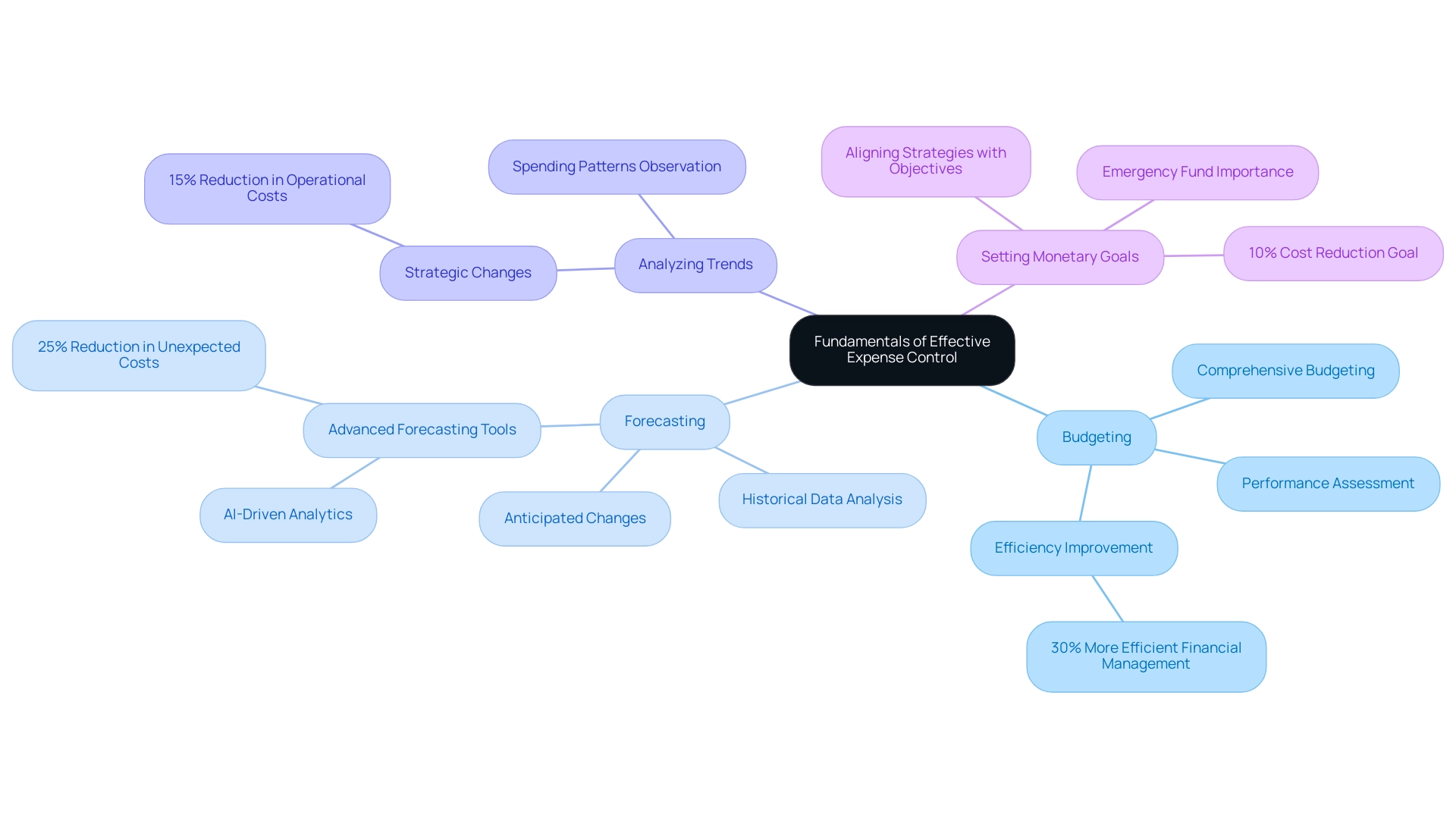
Practical Strategies for Tracking and Categorizing Expenses
To effectively monitor and categorize costs and enhance your business’s financial health, consider the following expert strategies:
-
Create Clear Categories:
Developing specific categories such as utilities, payroll, and office supplies that align with your budget will facilitate easier tracking and analysis. This structured approach allows for a more detailed examination of spending patterns, crucial for optimizing your Cash Conversion Cycle (CCC). -
Utilize Tracking Tools:
Adopting tools such as spreadsheets or specialized budget software is essential. Applications such as Expensify, which offers receipt scanning and automatic categorization, or QuickBooks, known for its robust reporting features, can automate and streamline the logging of expenses, enhancing accuracy and efficiency. Notably, 83% of high-performance organizations invest in such tools to maintain strong project oversight practices. By leveraging these tools, you can implement strategies from our whitepaper, such as optimizing inventory management and expediting accounts receivable collections, that directly contribute to better cash flow and profitability. -
Regular Reconciliation:
Schedule regular reviews, whether weekly or monthly, to reconcile your financial records with bank statements. This practice ensures the accuracy of your financial data and helps identify discrepancies early, aligning with the goal of mastering your CCC. -
Employee Training:
Educate your team on proper reporting procedures to minimize errors and discrepancies. Only 42% of entities have qualified project managers, emphasizing the significance of providing all staff with the essential skills to handle costs efficiently. Incorporating these strategies will significantly enhance your ability to manage and control costs, ultimately contributing to cost reduction and profit recovery.
As shown in a case study, IT project managers, who often utilize advanced cost control tools, earn an average annual base salary of $97,000, reflecting the high demand for skilled professionals in this field, and highlighting the necessity for effective financial strategies in your organization. By implementing these measures, you can not only enhance your financial oversight but also ensure your business is well-prepared for expansion and profitability.
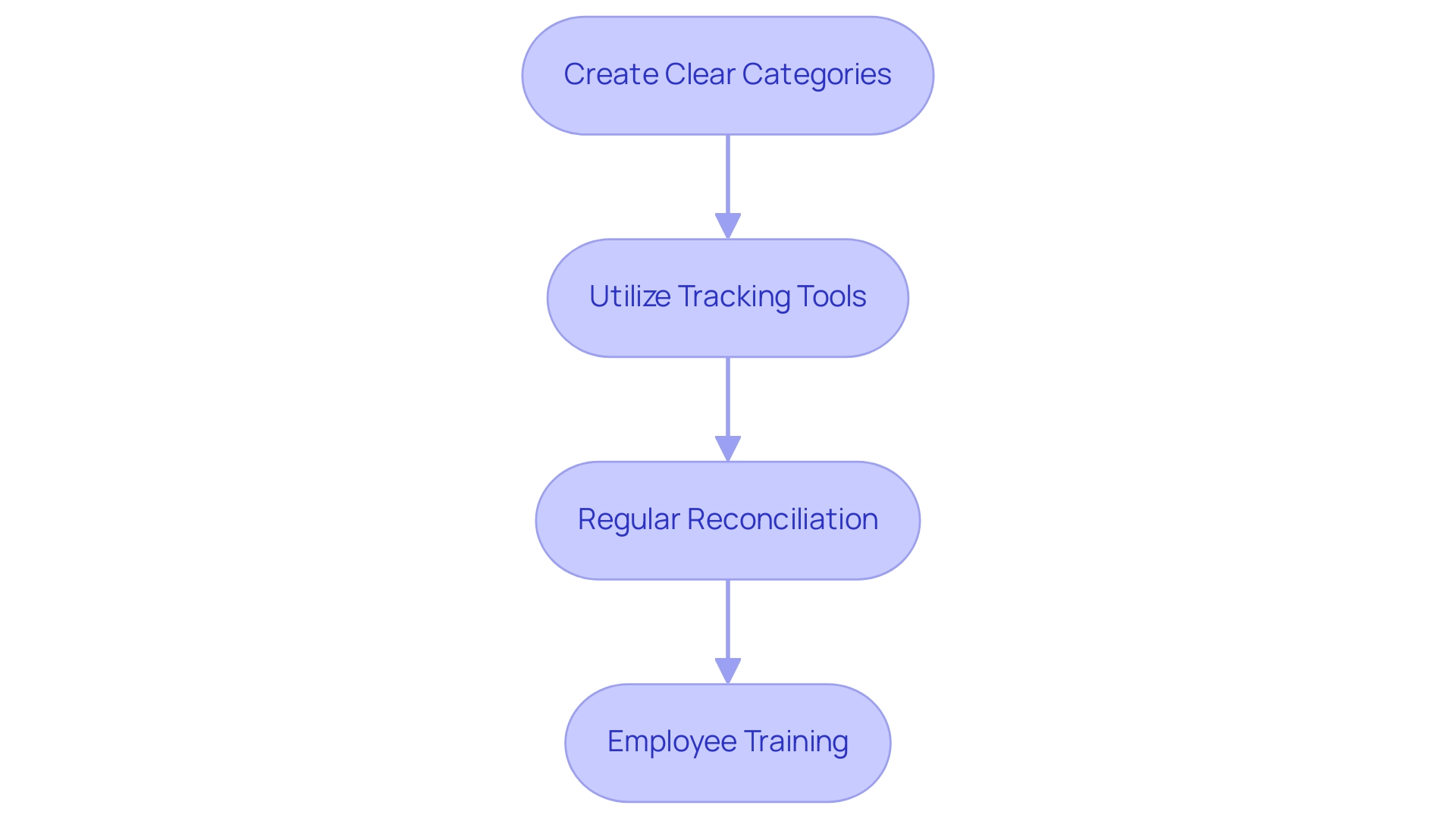
Leveraging Technology for Streamlined Expense Management
In today's fast-paced business environment, effectively streamlining financial management is not just beneficial—it's essential for maintaining a competitive edge. By harnessing the right technology, CFOs can implement strategies that not only reduce costs but also enhance overall financial performance. Here are key strategies to consider:
-
Expense Management Software: Leveraging robust software solutions like Concur or Zoho Expense can significantly enhance your accounting integration, providing real-time tracking and comprehensive reporting capabilities. These platforms support efficient cost categorization and streamline approval workflows, facilitating a shorter decision-making cycle throughout the turnaround process. For example, a leading tech firm reported a 30% reduction in processing time after implementing such software.
-
Automated Receipt Capture: Technology such as mobile apps like Expensify and Receipt Bank enables users to photograph and automatically upload receipts, dramatically reducing manual entry errors. This automation not only boosts reporting accuracy but also saves valuable time, echoing the importance of continuous monitoring. Organizations that adopted automated receipt capture experienced a significant enhancement in reporting accuracy and overall compliance, with one retail firm attaining a 25% rise in compliance rates.
-
Payment Platforms: Adopting advanced payment platforms that provide detailed transaction records simplifies the process of categorizing and monitoring costs. These platforms provide a clear audit trail, ensuring transparency and ease of reconciliation, which is critical for operationalizing lessons learned during the turnaround process. A monetary services firm noted that integrating a new payment platform led to a 40% decrease in reconciliation time.
-
Data Analytics Tools: Utilizing sophisticated analytics tools can provide deep insights into spending patterns, helping to pinpoint areas where costs can be cut. For instance, the construction sector, which allocated 23% more on business travel than healthcare and social assistance, could benefit from such tools to optimize travel costs. By continually monitoring success through data analytics, businesses can adjust strategies in real-time to enhance economic performance, as evidenced by a manufacturing company that reduced travel costs by 15% through targeted analytics.
By integrating these technologies, businesses can not only streamline their financial management processes but also achieve greater financial control and cost efficiency. The adoption of such technologies leads to improved accuracy and compliance, ultimately supporting profit recovery and sustainable cost reduction. This approach aligns with the growing trend of prioritizing cloud-based services, as evidenced by enterprises planning to allocate $8 out of every $10 in IT spending to the cloud, highlighting a shift towards more efficient and scalable solutions. Embracing these strategies is crucial for CFOs aiming to navigate today's economic challenges and drive their organizations towards long-term success.
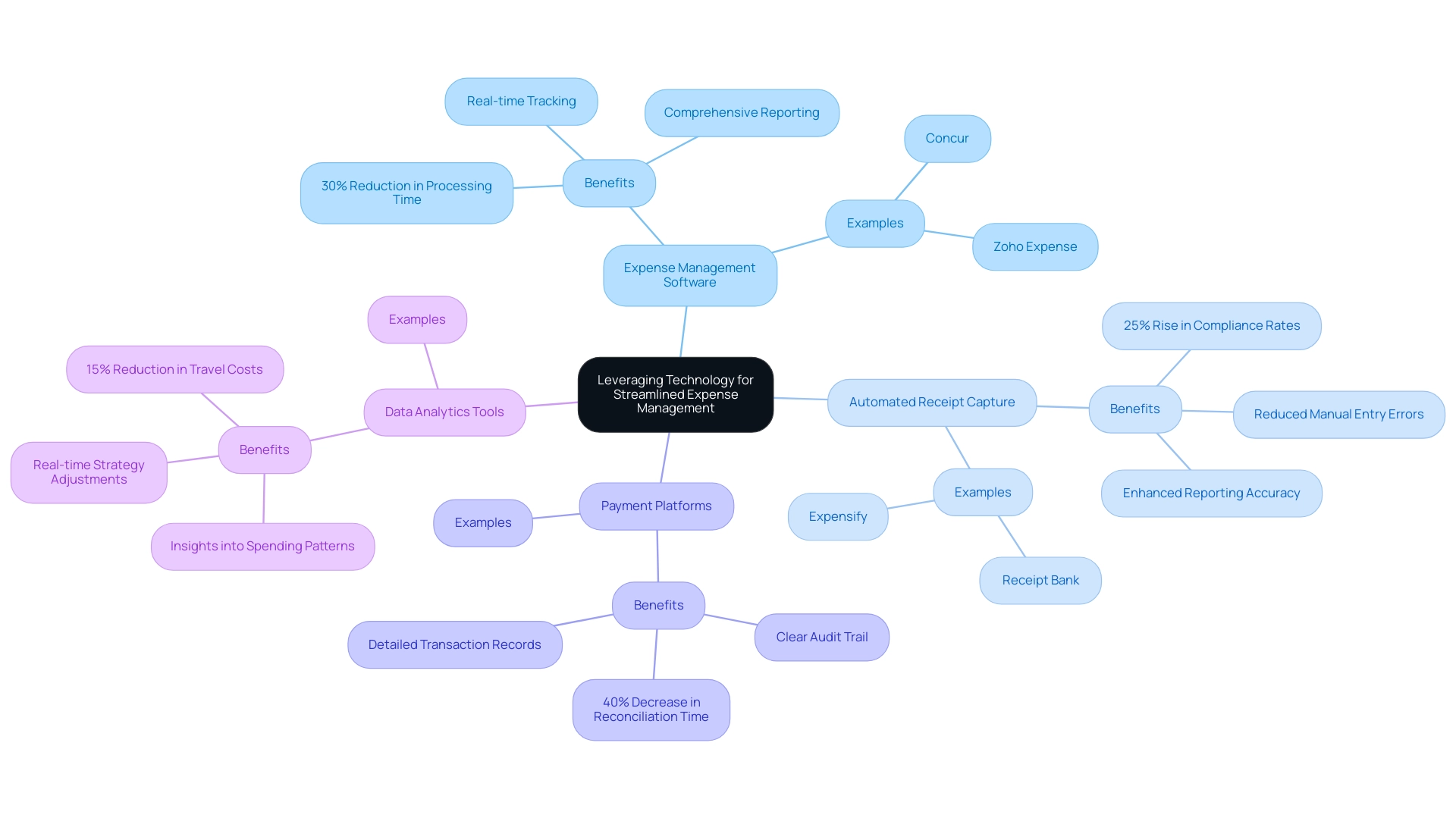
The Importance of Organized Record-Keeping
To maintain organized record-keeping and enhance cash flow and profitability, which are crucial components of the Cash Conversion Cycle (CCC), consider implementing the following best practices. These practices are particularly important given the challenges faced by hospitals in managing records and the critical need for cybersecurity in protecting sensitive information:
-
Centralized Storage System: Establish a centralized digital storage system for all expense documents, such as receipts, invoices, and reports. This method enables simple access and retrieval, streamlining operations and enhancing efficiency. According to John Riggi, Senior Advisor for Cybersecurity and Risk for the American Hospital Association, "Organizations must prioritize secure storage solutions to protect valuable data from cyber threats."
-
Consistent Filing Protocols: Develop consistent naming conventions and filing protocols for documents. By arranging records systematically, you ensure that monetary information is easily searchable and manageable. This is particularly crucial for hospitals, where outdated forms can lead to inefficiencies and compliance issues. For example, a well-structured filing system can reduce the time spent searching for documents, allowing staff to focus on patient care.
-
Regular Updates: Schedule regular intervals—either monthly or quarterly—to update records. This practice helps eliminate outdated documents and ensures that only necessary information is retained, keeping the system current and relevant. For instance, hospitals must continually update their patient records to comply with regulatory standards, which can also enhance the precision of reporting.
-
Backup Procedures: Implement regular backup procedures to safeguard against the loss of essential monetary information. Regular backups are essential for preserving data integrity and ensuring business continuity, especially in light of statistics that indicate stolen health records may sell for up to 10 times more than stolen credit card numbers on the dark web. Creating a regular backup plan can safeguard against data loss and ensure that your records remain intact.
Systematic record-keeping is a cornerstone of effective cost management, enabling businesses, particularly those in the healthcare sector, to operate with clarity and confidence. By adopting these practices, CFOs can enhance financial management, uncover hidden value, and ensure that their organizations are well-prepared to handle both routine and unexpected challenges, ultimately leading to improved financial health and performance.
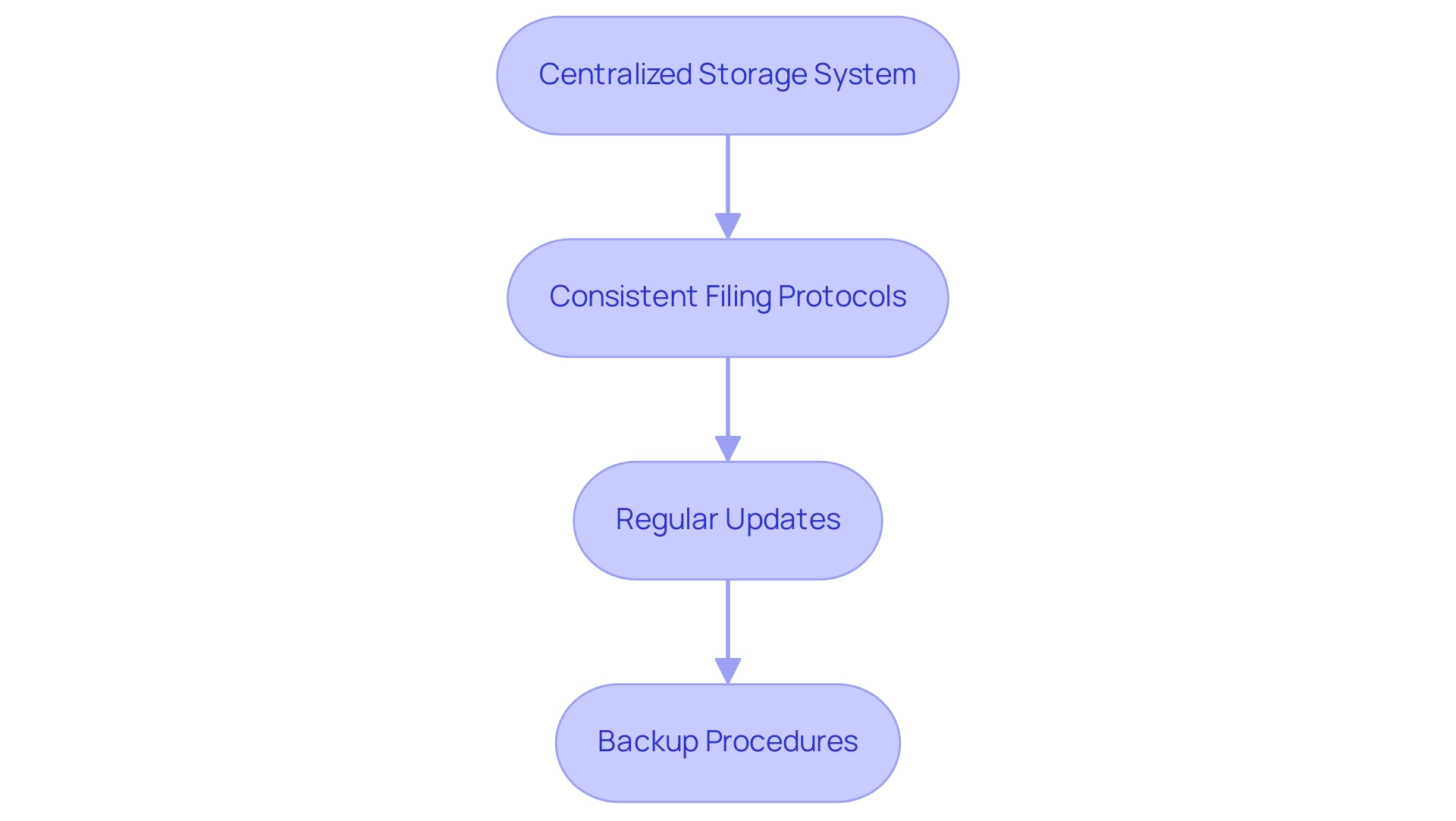
Real-Time Monitoring and Compliance in Expense Control
To ensure robust real-time monitoring and compliance in expense control, consider implementing the following actions:
-
Implement Real-Time Tracking Tools: Modern tools that offer real-time monitoring of costs can provide immediate insights into spending patterns and potential issues. The Bureau of Economic Analysis (BEA) highlighted the importance of such tools in their research on card transaction data to develop timely spending estimates during the COVID-19 pandemic. Although this product was discontinued due to budget constraints, its initial success underscores the value of real-time data in financial decision-making. Organizations utilizing real-time tracking tools have reported a 30% increase in compliance rates and a 25% reduction in processing time for financial reports. For example, Company X implemented a leading tracking tool and observed a significant decline in unauthorized costs within the first quarter.
-
Establish Compliance Policies: Clear and well-communicated compliance policies are vital for effective expense management. These policies ensure that all team members understand and adhere to the guidelines, promoting consistency and accountability. According to economist Alex Driessen, 'Effective compliance policies are the backbone of monetary integrity within an organization.' Developing a policy framework that includes regular training sessions can enhance understanding and adherence among employees, reinforcing the foundation of financial accountability. For instance, Company Y introduced a training program that increased policy adherence by 50% within six months.
-
Regular Audits and Reviews: Conducting regular audits of financial reports and transactions is essential for identifying discrepancies and ensuring adherence to established policies. This practice not only helps in maintaining compliance but also in spotting potential areas for cost reduction. Consider implementing a quarterly review process that focuses on high-risk areas identified in previous audits, allowing for timely adjustments and improvements. For example, Company Z's quarterly audits resulted in a 15% decrease in overall costs by addressing recurring issues.
-
Feedback Mechanisms: Creating feedback loops enables organizations to gather insights from team members about budgeting practices. This continuous feedback can drive improvements and adaptations in policies and tools, enhancing overall effectiveness. For instance, organizations that have adopted anonymous surveys or suggestion boxes have reported a 40% rise in employee engagement in financial management discussions, resulting in more informed policy adjustments and stronger relationships built on transparency. Company A, for example, utilized feedback to enhance their cost reporting process, resulting in a smoother workflow.
By fostering a culture of real-time monitoring and strict compliance, organizations can achieve tighter control over expenses, leading to improved financial accountability and profitability. Implementing these strategies not only enhances operational efficiency but also operationalizes the lessons learned through continuous performance monitoring, ultimately driving sustainable business success.
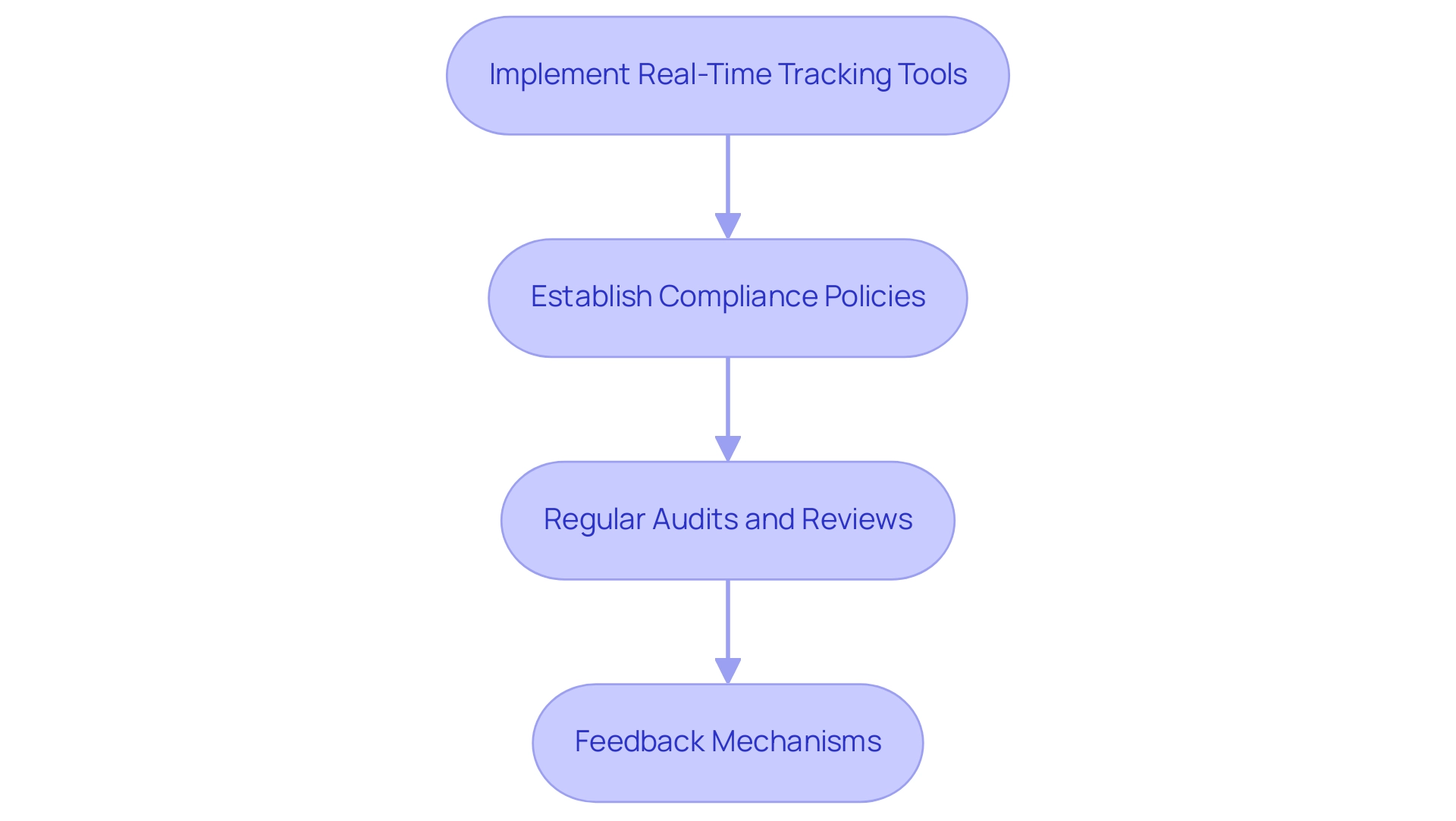
Conclusion
Effective expense management is integral to navigating the complexities of today's business landscape. By grounding strategies in the fundamentals of budgeting, forecasting, and trend analysis, organizations can gain a clearer understanding of their financial health. Establishing structured expense categories and utilizing advanced tracking tools not only streamline processes but also enhance accuracy and compliance.
The role of technology cannot be overstated, as leveraging expense management software and real-time tracking tools empowers CFOs to make informed decisions quickly. These innovations lead to improved financial performance and operational efficiency, ultimately driving long-term success. Furthermore, organized record-keeping and robust compliance policies are essential for maintaining integrity and accountability within financial operations.
In conclusion, adopting these strategies places businesses in a strong position to optimize expenses and bolster profitability. By embracing a proactive approach to expense management, organizations can not only weather economic challenges but also thrive in a competitive environment. The time to act is now; implementing these principles will pave the way for sustainable growth and financial resilience.




